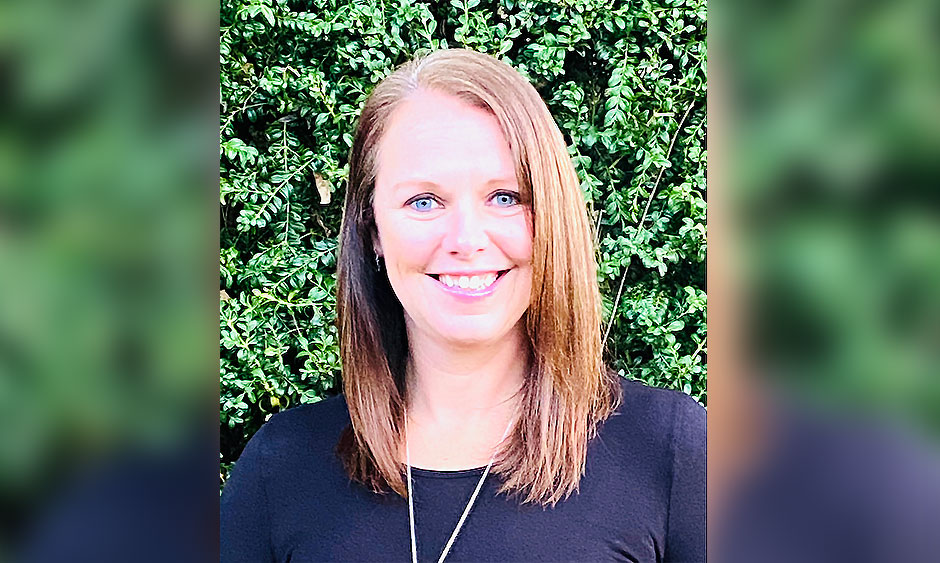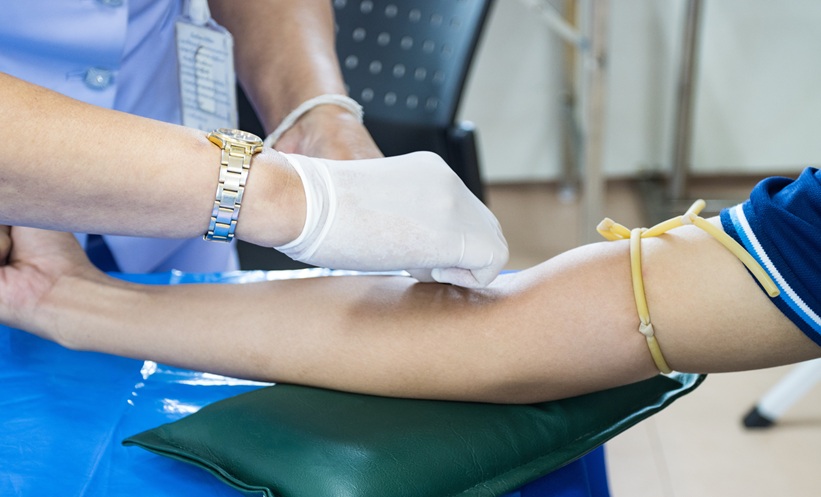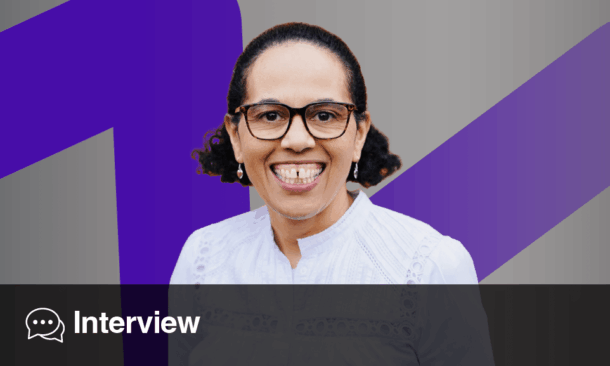Major (Retd) Sally Orange, Senior Physiotherapist, NHS Nightingale Hospital, London, UK
![]()
Interviewed by Janet Nzisa | Editorial Assistant, EMG-Health
![]()
Q: Could you tell us a little about what sparked your initial interest in physiotherapy and your career in sports physiotherapy?
A: It started at the age of 16 when I broke my leg and ended up having to stay a month in hospital and have metalwork in my leg. That’s when I was first introduced to physiotherapy and thought: ‘I really like this, and that’s what I’d like to do, as it’s all about helping people.’ It made me feel better and gave me independence, but it wasn’t as straightforward as just applying to university unfortunately.
I knew exactly what I wanted to do, but I wasn’t very good at exams. I sat my exams but, partly because I’d had a lot of time off school due to breaking my leg, I didn’t do very well. I thought: ‘I definitely want to do physiotherapy; I’ll resit my A-levels.’ Because of the pressure I put on myself, I actually did worse that next year than the previous year, but I had good enough grades to go to university.
I thought: ‘right, I’ll go and study radiography instead, that’s similar to physio’, but I soon realised it’s not at all. I started that degree, did 6 weeks of it, and then realised I definitely wanted to do physiotherapy, not radiography. I knew that’s what I wanted to do. So, I transferred to a different university and at that university I was doing a health studies course; I thought: ‘well, that’s more similar and I can transfer to physiotherapy if they’ll let me during the year.’ Long story short, that didn’t happen. I ended up finishing that degree and then having to go to another university to do another degree to study physiotherapy. Six years after first applying and then with an extra 3 years of study (a total of 9 years), I finally qualified as a physiotherapist, and then I ended up joining the Army. It was the Army that paid for my masters in sports and exercise medicine. Following my initial interest, I’d gone into musculoskeletal physiotherapy and that’s where I had an interest in sport. That is how my career in sports physiotherapy started.
Q: You served in the British Army for over 21 years and also volunteered at Commonwealth and Paralympic games, how have these experiences influenced your current position?
A: It is quite bizarre because there’s was a 10-year gap from when I started at a field hospital in Afghanistan to my current role in the Nightingale Hospital. Both have a very similar setting in that both are like war zones. But this time we have an invisible war with the coronavirus. What I mean is, in both scenarios you have a team of people who come together; when you’re thrown in at the deep end, you really bond quite quickly, and it was also the same at the Paralympics and the Commonwealth Games. As well as that, there are people from lots of different backgrounds who are all starting together from the beginning, not like normally when you go into a job where everybody else knows what they’re doing and you’re the newbie. The great thing is that you’re all new in it together, and that’s what particularly attracted me to this role.
Having been out of the NHS for 17 years, I was quite fearful about going back into that environment and not really knowing what to expect. But a lot of the physiotherapists who are working at the Nightingale are also from the same background as myself, in that they haven’t worked in the NHS for quite some time; they may have been in private practice or sports teams, etc. We’ve all got our own skill set and we’ve all got strengths and weaknesses to make a team together, and again, that’s exactly the same with the Commonwealth Games and Paralympics. But essentially, we’ve all got our patients’ best interests at heart. We’ve all got the same goal and the same focus: and that’s being able to do our best for all the patients.
Q: How did you come to be involved at the frontline of the current coronavirus disease (COVID-19) pandemic?
A: I volunteered for the first Nightingale and did my induction, but then it closed the week after. Because of this, I got a phone call telling me that the second Nightingale Hospital was opening and asking if I would be interested in getting involved. I jumped at the chance! I had the phone call on the Wednesday and was in my induction on the Friday, so I was able to be in it right from the beginning. Because I had done the first induction, I had a bit of an idea as to what I was letting myself in for and knew that it was totally what I wanted; I feel that’s the kind of environment I thrive in, where it’s a lot of learning and everybody’s learning together. So that’s why I put myself forward for it.
Q: What is the role of a physiotherapist for patients who have been hospitalised with COVID-19?
A: It depends what stage of COVID-19 the patients are at, or how it’s affected them. It may be that they’re in intensive care, also known as critical care. Essentially, with any patient, for a physiotherapist it’s about movement, it’s about getting them moving and keeping them active. In intensive care, we may be clearing phlegm from their chest and keeping their lungs expanded. But at the same time, if they’re not moving independently themselves, we would go in and do passive movements. With a lot of the patients who have been ventilated, it’s been recognised that treating them in the prone position, on their front, has been really effective, so sometimes physiotherapists have been redeployed as ‘proning’ teams. We also play a part in weaning patients off ventilators and rehabilitating them, which might in the initial stages be as simple as sit them up or sitting on the edge of the bed, as they have been lying flat for so long. Quite often it’s about reassurance as well, as it’s very scary for patients who can’t breathe normally. So, there are lots of elements to it.
But essentially, it’s working with the rest of the teams; the patients might be working with a speech and language therapist, an occupational therapist, it’s really multidisciplinary. For a physiotherapist, we’re essentially about movement and function and independence.
And it’s very much about trying to get our patients home safely, getting them to a level where they’re functional. Sometimes we’re speaking with social workers about the need for care packages for when they get home, as they’re likely to have been at a very different functional status before than what they are after, so we might need to get carers in to help them get back to that state; they can do so much in hospital, and then once they get back home they need a bit of help to get them back to their preadmission functional level. Some of them, unfortunately, will have deteriorated so much that they will never actually go back to what they were previously, especially the more elderly patients. Then it might involve looking at residential care homes, supported living, or nursing homes. There’s a whole array of things, depending on an individual and their family circumstances, their age, their wishes, and what they’re able to achieve.
Q: Working at the NHS Nightingale Hospital, what does a typical day look like for you?
A: There’s a fairly small team of us and we tend to have two separate shifts: either 8 a.m. to 4 p.m. or 10 a.m. to 6 p.m., because that’s essentially the hours that patients will be able to do those functional things. So unlike nursing, which is 24 hours, we’re not getting people up to mobilise and go for a walk during the early hours. That’s different to the first Nightingale or in critical care, as the physiotherapists there often do 12-hour shifts.
We come in together and we have a meeting where we find out how many admissions there have been. It’s a planning meeting for the day: if any of our patients are going to be going home, what kind of things need to be sorted for those patients to enable them to go home, and then it’s looking at prioritising and considering ‘who do we need to do what with first?’ It may be looking at whether they can wash and dress themselves, it may be assisting with that because that’s what they’re going to need to be able to do when they go home. And then based on that, we go and see the patients and try to give them a plan of what we’re going to do within that day because it’s very disorientating in the Nightingale. There are no windows, so there’s no natural light in there for the staff or for the patients; it’s quite a different setting. I think a lot of us at the moment don’t know what day it is, so to ask the patient what day it is or ‘do you know where you are?’ doesn’t really give you that much of a sense of whether they’re understanding things or not, because we also go in and say: ‘what day are we on today?’
And then we just work through the patients, trying to get them positioned, or sitting out in a chair for their meals, and trying to work towards certain carefully planned goals. We’re very much setting goals from the beginning: in a week’s time we want you to be able to walk from here to here, we want you to do these stairs, etc. And that all takes place very much based on an initial assessment, asking patients about their home, their lifestyle, and what we’re trying to get them back to. That will be individual for each patient and it might also involve their families. Sometimes, because of how it is with no visitors, we’re trying to link them back into their families as well through the Family Liaison Team.
Another added barrier is the face mask. With the older patients, if they’re hard of hearing that can make things difficult. In the first Nightingale induction, a lot of our training was on the fact that you would be gowned up, and how to communicate with each other as well as with the patients. It would be very easy to get things wrong with regards to medication, for example, because normally we have so much facial expression. We can work out if somebody’s not quite sure about something or if they’re anxious; you get a lot from a face, which the face mask takes away. So, there’s a lot of different training in communication skills and those nonverbal communication skills as well.
Q: How has the Nightingale Hospital adapted since the first wave of the pandemic in the UK last spring?
A: The first wave was very much for ventilated patients. I didn’t actually get to work there, but the training was all based around the patient being ventilated. There are a lot of things that people might not realise are a consequence of being ventilated, such as the muscles in the throat becoming weak and then patients having problems with speech as well as swallowing and eating food, so the speech therapists are really quite critical in those stages.
From a physiotherapist’s point of view, people quite often associate physiotherapists with musculoskeletal problems, but one of the specialties is respiratory care for those who have undergone surgery or are in intensive care. Some physiotherapists choose this speciality and are skilled in it all year round, not just because of COVID-19. They assist with breathing difficulties or help keep airways open using different adjuncts to therapy.
The second Nightingale Hospital is much more rehabilitation-based, though. It may be that we have older patients who had a fall and have fractured their hip; they have then needed to have surgery to repair the fracture and, particularly because of their age, it’s not good for them to be in a COVID-19-positive environment. There are also patients who might stay a little bit longer, but not necessarily in the acute setting, so we’re trying to get them out of there. They have to be medically stable to be eligible to be admitted, but they’re just needing that extra bit of rehabilitation to be able to get back to the independence that they had before. Some of them may have had COVID-19, others may have been in critical care because of other illnesses or injuries.
But a significant difference is that critical care units are usually one-to-one. However, because there are so many more intensive care beds within the intensive care units at the moment, they are sometimes not all on a one-to-one basis due to lack of staffing. So sometimes patients can develop things like pressure sores because they’ve been lying in certain positions for a long time. Normally that would be very much kept on top of and that’s still very high on the agenda when looking after them, but if nurses are looking after three or four patients, they perhaps haven’t got the time to do everything they normally would. The impact is massive; it’s the smaller things that I think people don’t really realise. If you have that one-to-one care, you can turn your patient on a regular basis and you can do all the observations as normal. But when you’re having to do that to four patients, something somewhere is going to slip down the hierarchy of needs, and essentially, it’s more important to keep somebody breathing and alive than their pressure sores. But further down the line they can then cause problems: if they have a pressure sore on their heels, for example, it’s really difficult to walk. It becomes this downward spiral: because they can’t walk, they can’t improve their strength and so they can’t go back home. The impact is massive in more ways than people realise, I think.
Q: What have been the major challenges the hospital has faced since reopening this year? And can you share the details of your recent campaign to have school children write to the Nightingale’s patients, and your fundraising challenge to run 100 laps of the Excel centre?
A: It’s obviously not a purpose-built hospital, but it’s incredible what you see. The thing I know the Excel Centre for is the expo before the London marathon. Now, in those exact same rooms, there are toilets and different hospital wards and bays built. Some of the different challenges include the fact that there is no natural daylight and patients lying in bed are looking up to a huge ceiling rather than a normal, lower ceiling. And from a staff point of view, it’s difficult because the NHS is still working, so a lot of the staff are people who have come from private practice or have done different things are having to almost retrain some of their skills because they’re not specific to those areas. For example, you might have a nurse who is used to working in learning disabilities. They are still a qualified nurse, but they just haven’t worked on a ward setting for some time. These are some of the challenges.
And it’s not the cosiest of places because families can’t bring anything in, they can’t bring cards in or that kind of thing. I am one of the national ambassadors for the Army Cadet Force and I suddenly had an idea as I know most people like receiving letters. I know that we don’t do it quite as much as we used to, but to receive a letter, and also to send a letter knowing that somebody else is going to be receiving that, is a nice thing to do. And with home schooling, there are a lot of parents out there struggling with ideas or creativity. So, I put a bit of a shout out to Cadets and young people or adults on social media asking, ‘how do you fancy making someone else’s day?’ You might think we’re in lockdown, and not really doing anything, but believe me, compared to people who are in hospital, you have the freedom to do so much more than them. Even if you’re just telling a story, or drawing a picture, to then send it to someone who’s in hospital just felt like a win–win situation; you’re giving a smile. So that’s one of the one of the campaigns that I’ve done.
And then sadly recently Captain Sir Tom Moore passed away. And I think everybody has just felt that feeling of sadness, that he was such an inspirational person and sadly passed away from the very virus that he was raising funds to help. I’m a veteran of the Army myself and I thought I’d run 100 laps of the Excel Centre, of the Nightingale hospital, which will be 100 miles, in his memory. With half of those laps I will be wearing military uniform and half of the laps I will be wearing hospital scrubs. And what I want to do is to dedicate each mile to an NHS worker and a military worker because they’re both working on the front line at the moment, and I just think it’s a way of the public being able to make a donation, just show their gratitude and thanks for somebody personally.
And I’m breaking it down, I’m not doing the 100 miles in one go. I think that this pandemic for a lot of people just seems overwhelming. But it’s trying to show that by breaking things down, we can achieve so much more than we think we can. By doing a mile each day, it will add up quite quickly. And that then becomes a habit; if it becomes a positive habit, then that’s a positive that we take away from this situation. I’m raising money for Help for Heroes, which were a military charity, and NHS charities together. Because I spend time with a lot of my patients teaching them to use a walking frame, I realised that this was something very symbolic of Captain Tom and so for my last lap I will be taking a walking frame, to keep Captain Sir Tom in our minds because that will be a few months on from when he passed, so it will really show that his legacy lives on.
Click here to visit Sally Orange’s charity page, ‘100 laps of Nightingale in memory of Capt Tom’.
Q: Patients with ‘long COVID-19’ often benefit from treatment by a physiotherapist, such as respiratory treatment and physical rehabilitation, but is there anything patients could do themselves to alleviate their symptoms?
A: It is important to remember that it can take quite some time to recover from COVID-19, and that patients can still feel breathless, can get tired very quickly, and can be affected by that sense of loss of smell, loss of taste, swallowing difficulties with eating or drinking [after ventilator support], and might still have the cough. It will all be very individual though.
With breathlessness, avoid holding your breath with activity. For some people, it becomes a bit of a cycle that they get breathless and then get anxious, so then hold their breath more and then become more anxious; it basically becomes a vicious cycle. Patients with other respiratory problems like emphysema or chronic obstructive pulmonary disease tend to purse their lips. For these patients, they take the breath in through the nose and then out through the lips and that can be helpful to them. Positioning can help as well. If you think of yourself when you’ve been for a run and you’re trying to get your breath back, if you think about your positioning, sometimes you put your hands on your hips, you might lean up against a wall, so that those accessory muscles are in the best position to be able to work.
Another factor is fatigue management by pacing activities and breaking things down and setting goals. For example, planning to clean the house for somebody with long COVID-19 may be too much. So, break it down to ‘I’ll do that room tomorrow’ or even break it down smaller than that. It’s about looking at your body’s energy. If you think of a jug of energy where you are always going to need that jug to be about a quarter full, when you do some activities that’s going to deplete, some activities will give you energy, but there’s always those unexpected things that might happen as well. It’s about making sure that you’ve still got some energy left or some fuel left in the tank for those unexpected things. For example, you might go out for a walk and then you misplace your key, that anxiety then takes up a bit of extra energy.
It’s also about lowering expectations. Really, I think people think that they’ll be able to get back to what they were doing as quickly as they could do before. They might be able to do the level of functional activity that they were able to, but they might need to ask for help. They may need help with food and with shopping and cooking, and some of the simplest tasks that previously they would manage but now they are getting breathless. It’s just breaking it down into functional tasks that are achievable.
The other thing is relaxation. If somebody has been in intensive care, then they might struggle with memory, with sleep, they might have nightmares, and that’s quite normal for somebody who’s experienced a large amount of time in intensive care. Managing and explaining that these things are normal, but they will decrease as they recover from COVID-19 is very important. A prolonged stay in hospital, whether for COVID-19 or otherwise, will always have more of an impact than people realise. In hospital, you don’t sleep as well as you do in your own bed, there are other people all around, there are conversations going on. That’s why we’re trying to get patients home as quickly as possible, so long as they’re safe because that’s the main concern really, that they’re safe.
If you think about having a common cold, it wipes you out and it takes a good couple of weeks to get back to normal; remember what it’s like when you’ve had a cold, it really does fatigue your body. The other thing is food. Make sure to eat good food to fill up that energy jug. Energy can be replenished by the types of food we eat, snacks or junk food are not fuelling in the right way.
So, there are lots of things that people can do themselves; they might only be small things, but just like the 100 miles show, adding them all up together can have a much bigger impact.








